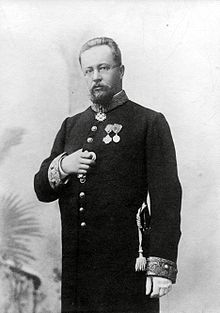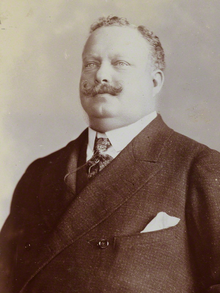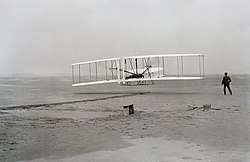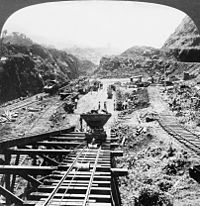
| Millennium |
|---|
| 2nd millennium |
| Centuries |
| Decades |
| Years |
| Categories |
The 1900s (pronounced "nineteen-hundreds") was a decade that began on January 1, 1900, and ended on December 31, 1909. The Edwardian era (1901–1910) covers a similar span of time. The term "nineteen-hundreds" is sometimes also used to mean the entire century from January 1, 1900, to December 31, 1999 (the years beginning with "19").
Contents
- Pronunciation varieties
- Demographics
- Politics and wars
- Major political changes
- Wars
- Internal conflicts
- Colonization
- Decolonization
- Prominent political events
- Disasters
- Natural disasters
- Non-natural disasters
- Assassinations and attempts
- Economics
- Science and technology
- Science
- Technology
- Popular culture
- Literature
- Art
- Film
- Music
- Fashion
- Historic events
- Sports
- Food
- People
- Modern artists
- Other notable people
- Sports figures
- Last survivors
- See also
- Timeline
- Notes
- References
- Further reading
- External links
The Scramble for Africa continued, with the Orange Free State, South African Republic, Ashanti Empire, Aro Confederacy, Sokoto Caliphate and Kano Emirate being conquered by the British Empire, alongside the French Empire conquering Borno, the German Empire conquering the Adamawa Emirate, and the Portuguese Empire conquering the Ovambo. Atrocities in the Congo Free State were committed by private companies and the Force Publique , with a resultant population decline [note 1] of 1 to 15 million. From 1904 to 1908, German colonial forces in South West Africa led a campaign of ethnic extermination and collective punishment, genociding 24,000 to 100,000 Hereros and 10,000 Nama. The First Moroccan and Bosnian crises led to worsened tensions in Europe that would ultimately lead to the World War I in the next decade. Cuba, Bulgaria, and Norway became independent.
The deadliest conventional war of this decade was the Russo-Japanese War, fought over rival imperial ambitions in Manchuria and the Korean Empire. Russia suffered a humiliating defeat in this conflict, contributing to a growing domestic unrest which culminated in the Russian Revolution of 1905. Unconventional wars of similar scale include insurrections in the Philippines (1899–1913), China (1899–1901), and Colombia (1899–1902). Lesser conflicts include interstate wars such as the Second Boer War (1899–1902), the Kuwaiti–Rashidi war (1900–1901), and the Saudi–Rashidi War (1903–1907), as well as failed uprisings and revolutions in Portuguese Angola (1902–1904), Rumelia (1903), Ottoman Eastern Anatolia (1904), Uruguay (1904), French Madagascar (1905–1906), Argentina (1905), Persia (1905–1911), German East Africa (1905–1907), and Romania (1907). A major famine took place in China from 1906 to 1907, possibly leading to 20–25 million deaths. This famine was directly caused by the 1906 China floods (April–October 1906), which hit the Huai River particularly hard and destroyed both the summer and autumn harvest. The 1908 Messina earthquake caused 75,000–82,000 deaths.
First-wave feminism made advances, with universities being opened for women in Japan, Bulgaria, Cuba, Russia, and Peru. In 1906, Finland granted women the right to vote, [2] the first European country to do so. [3] The foundation of the Women's Social and Political Union by Emmeline Pankhurst in 1903 led to the rise of the Suffragettes in Great Britain and Ireland. In 1908, a revolution took place in the Ottoman Empire, where the Young Turks movement restored the Ottoman constitution of 1876, establishing the Second Constitutional Era. Subsequently, ethnic tensions rose, and in 1909, up to 30,000 mainly Armenian civilians in Adana were massacred by Muslim civilians.
The decade saw the widespread application of the internal combustion engine including mass production of the automobile, as well as the introduction of the typewriter. The Wright Flyer performed the first recorded controlled, powered, sustained heavier than air flight on December 17, 1903. Reginald Fessenden of East Bolton, Quebec, Canada made what appeared to be[ clarification needed ] the first audio radio broadcasts of entertainment and music ever made to a general audience. The first huge success of American cinema, as well as the largest experimental achievement to this point, was the 1903 film The Great Train Robbery , directed by Edwin S. Porter, while the world's first feature film, The Story of the Kelly Gang , was released on December 26, 1906, in Melbourne, Australia. Popular books of this decade included The Tale of Peter Rabbit (1902) and Anne of Green Gables (1908), which sold 45 million and 50 million copies respectively. Popular songs of this decade include "Lift Every Voice and Sing" and "What Are They Doing in Heaven?", which have been featured in 42 and 16 hymnals respectively.
During the decade, the world population increased from 1.60 to 1.75 billion, with approximately 580 million births and 450 million deaths in total. As of March 2025, 3 people from this decade remain alive (see List of oldest living people), all of them women. The last living man from this decade was Juan Vicente Pérez (27 May 1909 – 2 April 2024).













































